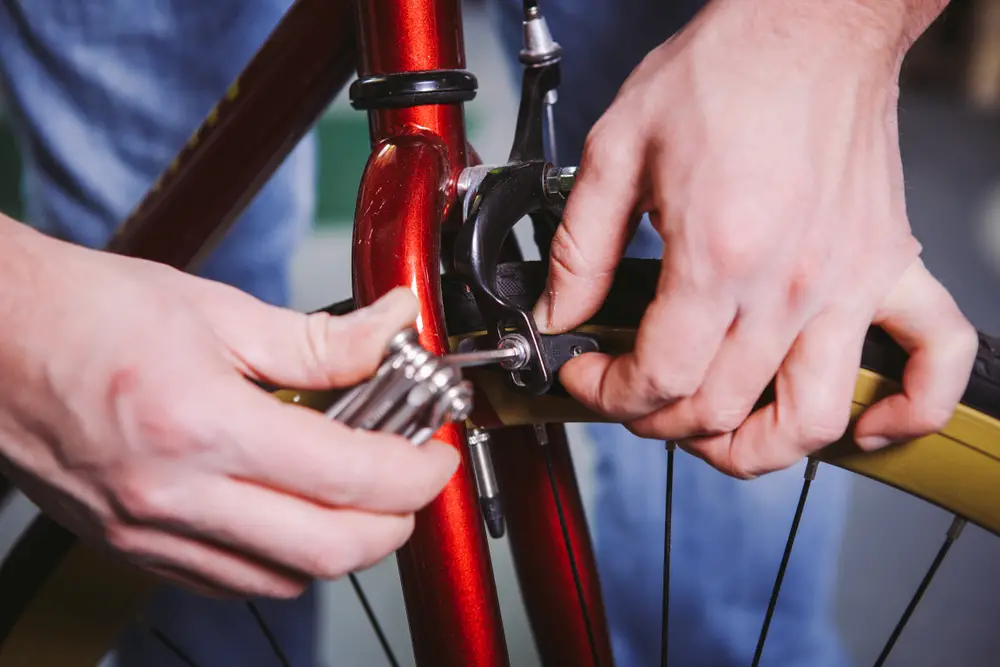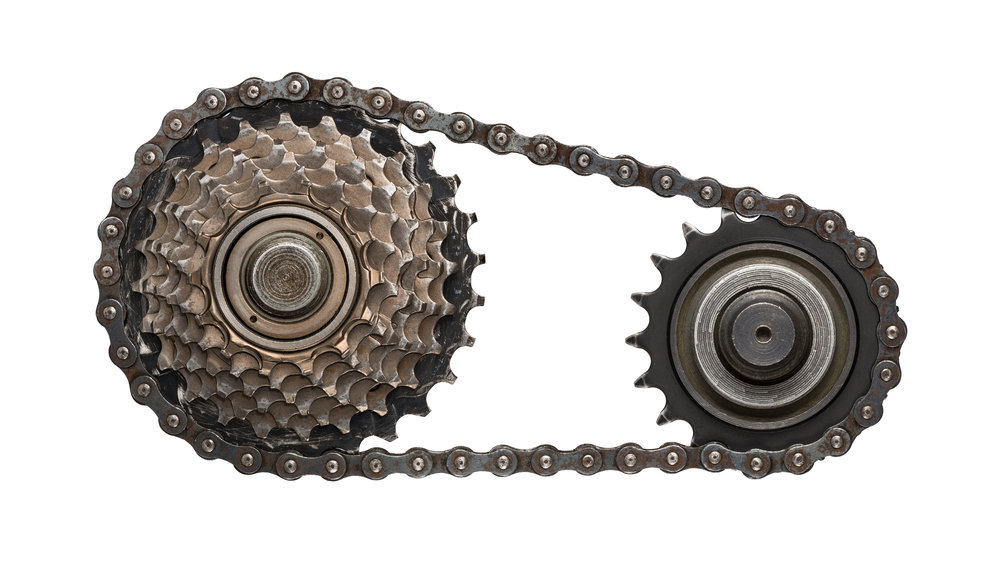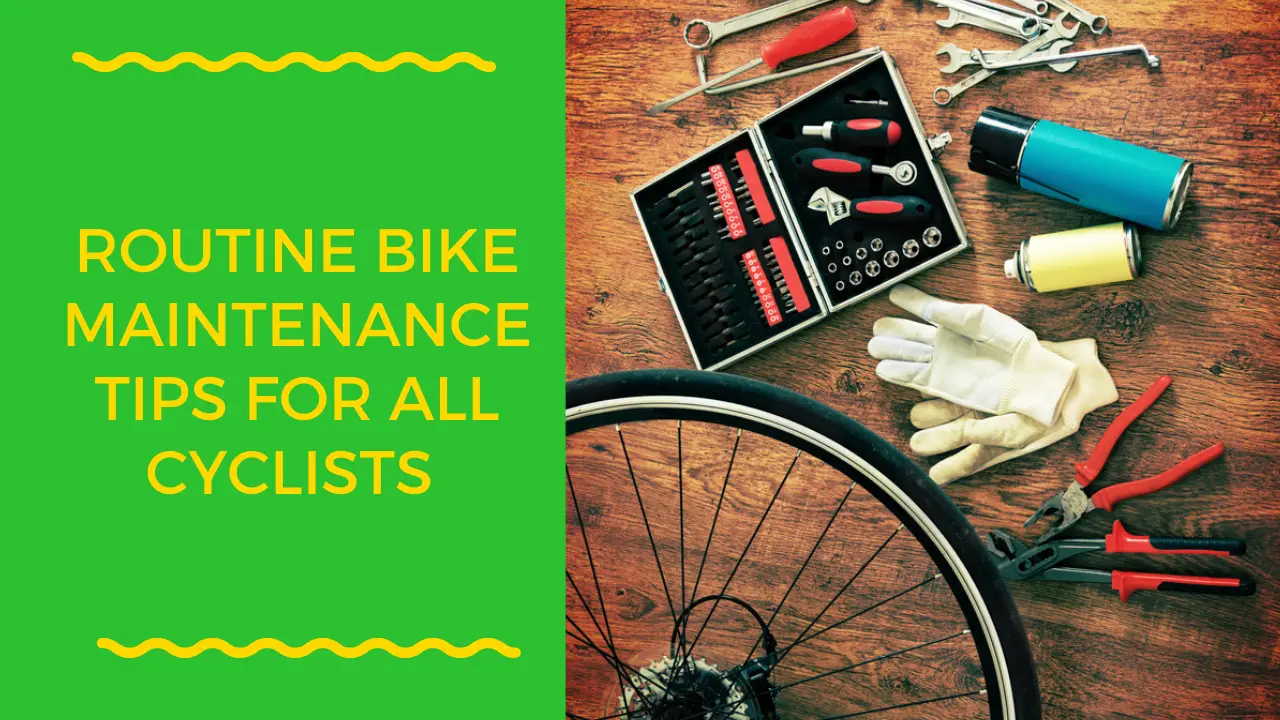As a cyclist, you need to know the basic bike maintenance tips like the back of your hand. Keeping your bike in mint and good condition makes the ride smooth, comfortable, and lasting.
This is guide will show you how to squeeze more miles from your two-wheel machine. Anyone can do it from beginner cyclists to experienced riders.
However, we always recommend that you take your bicycle to a mechanic if the problem seems too out of reach.
So let's get right to it, shall we?
Contents
1. Clean the Bike Regularly
As a rider, you should always set a date to clean your bicycle and make it a routine. It can be weekly, monthly, or more frequently depending on how much you ride. Cleaning your bike regularly keeps the vital parts alive and protects them from wearing out.
Here are some of the cleaning accessories that you will need to ease the process.
Rag
Make sure you have about three clean rags for washing, drying, or waxing different parts.
Brushes
Have a set of brushes ready for the areas you can't easily reach. A collection of Old toothbrushes will also do the trick.
Degreaser
Use a bike specific degreaser to clean the gum on the chain. Steer clear of turpentine and kerosene, which damage the bike.
Soap
In case you have no specific bike cleaner, use dishwashing soap to clean the dirt off.
2. Check the Tires

As you plan a regular bike wash, you should check to see if the pressure on the tires meets the basic minimum.
Bicycle tires loose air pressure fast, especially if you' ride more frequently. Therefore, having a floor pump ready at all times is necessary.
The average air pressure for a bicycle is between 80-120 psi. However, the amount of tire pressure depends on riding conditions, tire type, and body weight. You can also check the side of your tire to see if there’s a recommended pressure.
Lastly, you should always keep the tires inflated even when you're not using the bike. It also helps to know how to fix a flat tube.
3. Clean and Lube the Drivetrain
The drivetrain is the lifeline of a bicycle (source), and as such, you should always keep it clean and lubed up.
Still, how much you clean the drivetrain depends on how frequently you ride and the routes you cover. For example, if you ride in wet, muddy areas, you have to clean and lube and drivetrain frequently.
Cleaning the whole chain is a long and tedious process, and you will need brushes, rags, and a degreaser. Alternatively, you can buy unique chain cleaning equipment that makes the work easier.
4. Check the Brakes

Bike maintenance 101 states that the brakes should always be at their level best. Brakes protect you, other cyclists, or passers-by.
There are three things you can do to ascertain the quality of brakes on your bike.
1. Brake test
Pull the brake levers, squeezing them tight on the handlebar, and hold the brake in that position to see if it works perfectly. If the brakes take longer to work, adjust the brake pads and bring them closer to the rim
2. Check the brake Pads
Keep track of the wear indicator on the pads; that way, you'll know when to replace the pads.
3. Clean the brake pads
For an effective brake, you need to clean the pads repeatedly. Make sure the rotors are clean in the disc brakes. You can also use disc brake cleaners to ease the process.
5. Re-Index the Gears
Gears are an important component of every bike. You can use gears to take the ride up a notch or tone down a bit.
When you have problems switching gears you need to do a quick check of the barrel adjuster. The barrel adjuster is always somewhere at the back of the derailleur near the cable ingress.
When the cable ingress is loose it makes switching to the bigger cogs difficult. To know whether the cable needs tightening simply do a stand check.
Mount the bike on the stand and start turning the pedals while shifting gears. If you have difficulty switching to the higher gears then you need to tighten the ingress cable.
To do that you need to turn the barrel adjuster in an anti-clockwise motion. You can learn more about adjusting bike gears here.
6. Tighten the loose Bolts and Nuts
Your bike has dozen of bolts holding different parts together, which become loose over time. You need to tighten the bolts to prevent your bike from falling apart.
The simple way to keep your ship tight is by doing a weekly check of critical parts where the bolts and nuts stand. For example, you can check if the bolts on the mudguard are firm.
You can use specifically the bikes specific torque specs to tighten the bolts and nuts. However, make sure they are tight enough not to fall off but also loose enough not to affect the quality of the ride.
7. Do a random Check
Random checks help you to know the parts, which are loose, worn out, or simply flat out broken.
Random checks involve things like lightly bumping your bike against the ground to see which parts fall off or detach easily.
8. Replace the worn-out Components
There are certain parts of the bicycle that wear faster than others. That’s because most of them are in constant use. You need to replace such parts before you injure yourself or others.
Here are some of the parts prone to wear and tear.
9. The Chain

A bike chain is one of the most overused parts of a bicycle. Therefore, it's no surprise that it is among the first to wear out.
You can tell the chain is weak by merely looking at the stretch percentage. If the stretch is anything over 0.75%, it's time to get a new one.
10. Tires
The next victims of outside forces are the tires. Tires have a threshold capacity, which cannot be exceeded. In most cases, a bike tire should not go beyond the 4000 miles capacity. Other supple tires like the ones on racing bikes can only last for 2000 miles.
11. Cassette
The cassette also wears out quickly because of the effects of dirt, and grease. However, you can increase the lifespan of the cassette by cleaning the drive train frequently. A well-maintained cassette can out-live two chains.
That said, you should always test the efficiency of your bike’s cassette using the gear-check. Simply shift the gears randomly and if the gear skips after you’ve replaced the old chain with a new one then it’s time you got a new cassette.
Conclusion
Use these easy-to-do methods to increase the lifespan of your bike. You'll thank yourself later.

